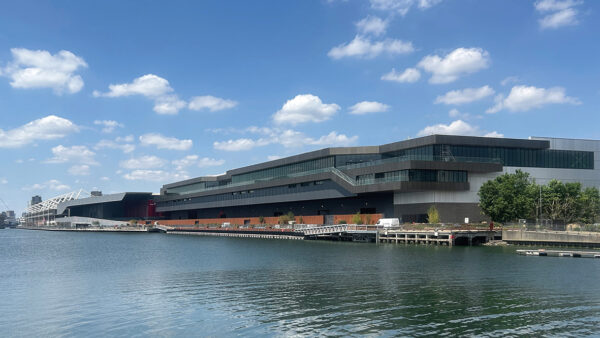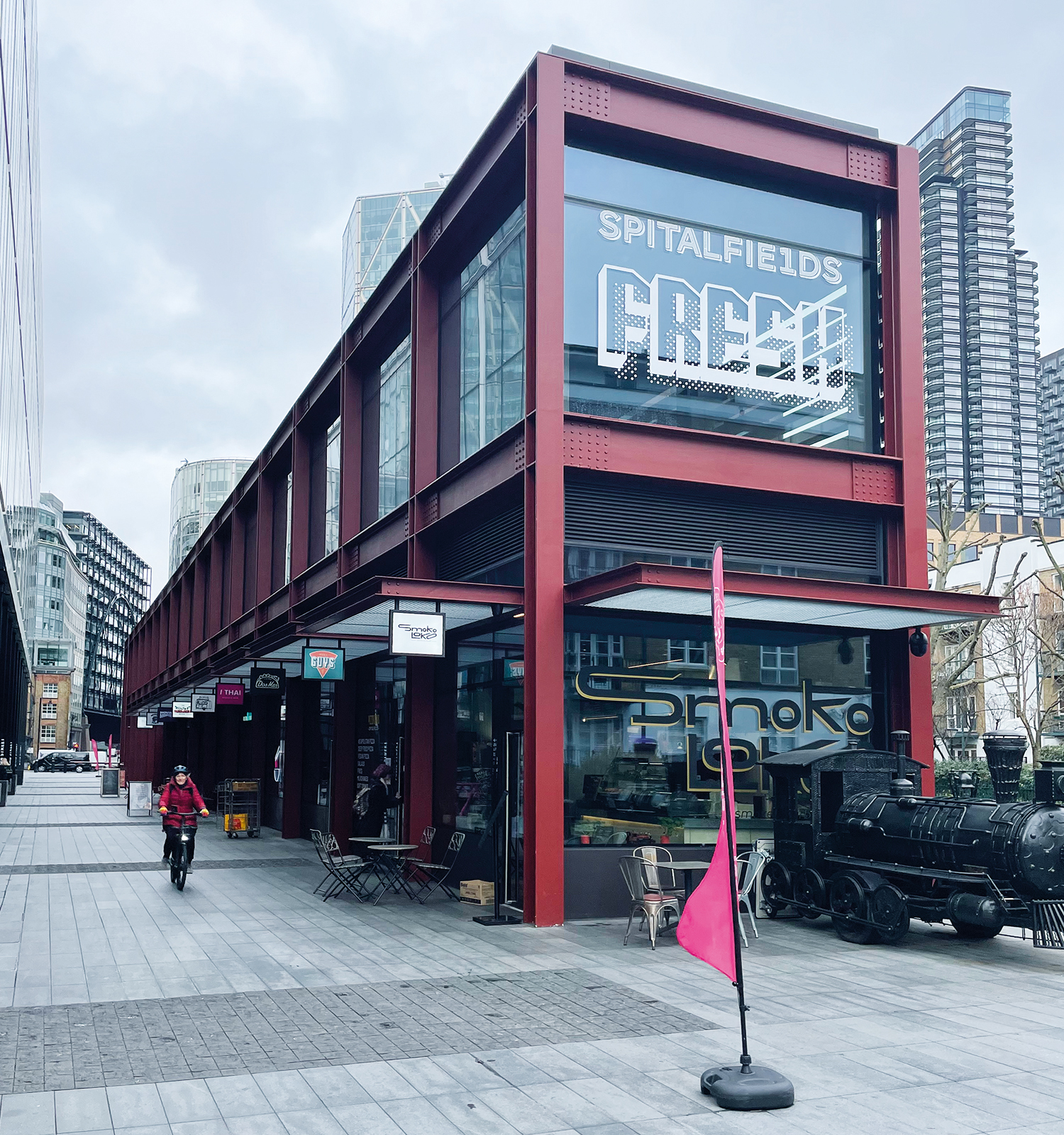
East End trader
Exposed steelwork forms a standout retail building adjacent to a historic market.
Commendation: Bishops Square, London
Architect Foster + Partners, Bond Bryan
Structural engineer Price & Myers
Steelwork contractor Elland Steel Structures Ltd
Main contractor VolkerFitzpatrick
Client J.P. Morgan
Forming part of the multi-million-pound Bishops Square redevelopment, which has transformed a large area next to east London’s historic Spitalfields Market, a steel-framed structure has added 10 retail and food outlets.
The distinctive two-storey building includes an exposed structural steel frame, coated in dark red iron oxide, infilled by glazing, canopies and partitions to give it a modern, industrial feel.
As well as providing the scheme with its integral aesthetic look, steelwork was chosen for its speed of construction. The material created a lighter structural frame than many other forms of construction – an important consideration as the new building is positioned and founded on top of an existing car park substructure.
One elevation is directly supported on an existing basement wall, while the main elevation, containing the shopfronts, has been formed with a series of trusses.
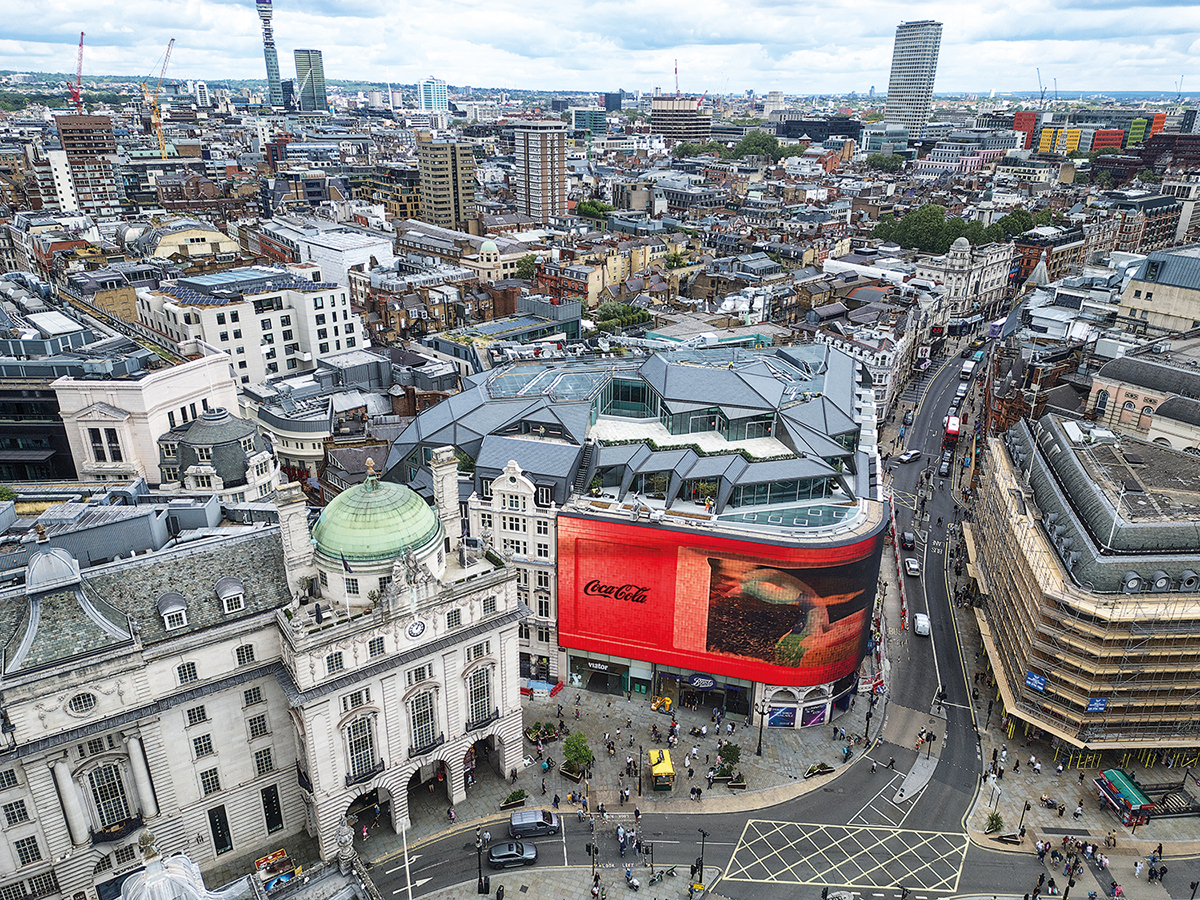
Keeping the lights on
Behind the Piccadilly Lights, a steel-framed scheme has transformed a site once occupied by 13 buildings.
Commendation: Lucent, London
Architect Fletcher Priest Architects
Structural engineer Waterman Group
Steelwork contractor Severfield
Main contractor Wates Group
Client Landsec
An eight-storey steel-framed development known as Lucent, consisting of Grade A office space, retail units and seven apartments, includes a rooftop restaurant that opens up stunning views of the capital.
Two large retained elements are incorporated into Lucent. One is the structure supporting the Piccadilly Lights digital screen and other is a two-storey store incorporating a Boots unit.
Severfield project associate director Nick Scott says: “We had to carefully erect steelwork over the existing Boots store and thread steel beams around the Lights, without damaging them or requiring them to be shut down.”
The structure supporting the digital screen was temporarily propped during the demolition and construction works. Once Lucent was completed, the props were removed and the screen now gains its lateral stability from being connected to the new steel-framed structure.
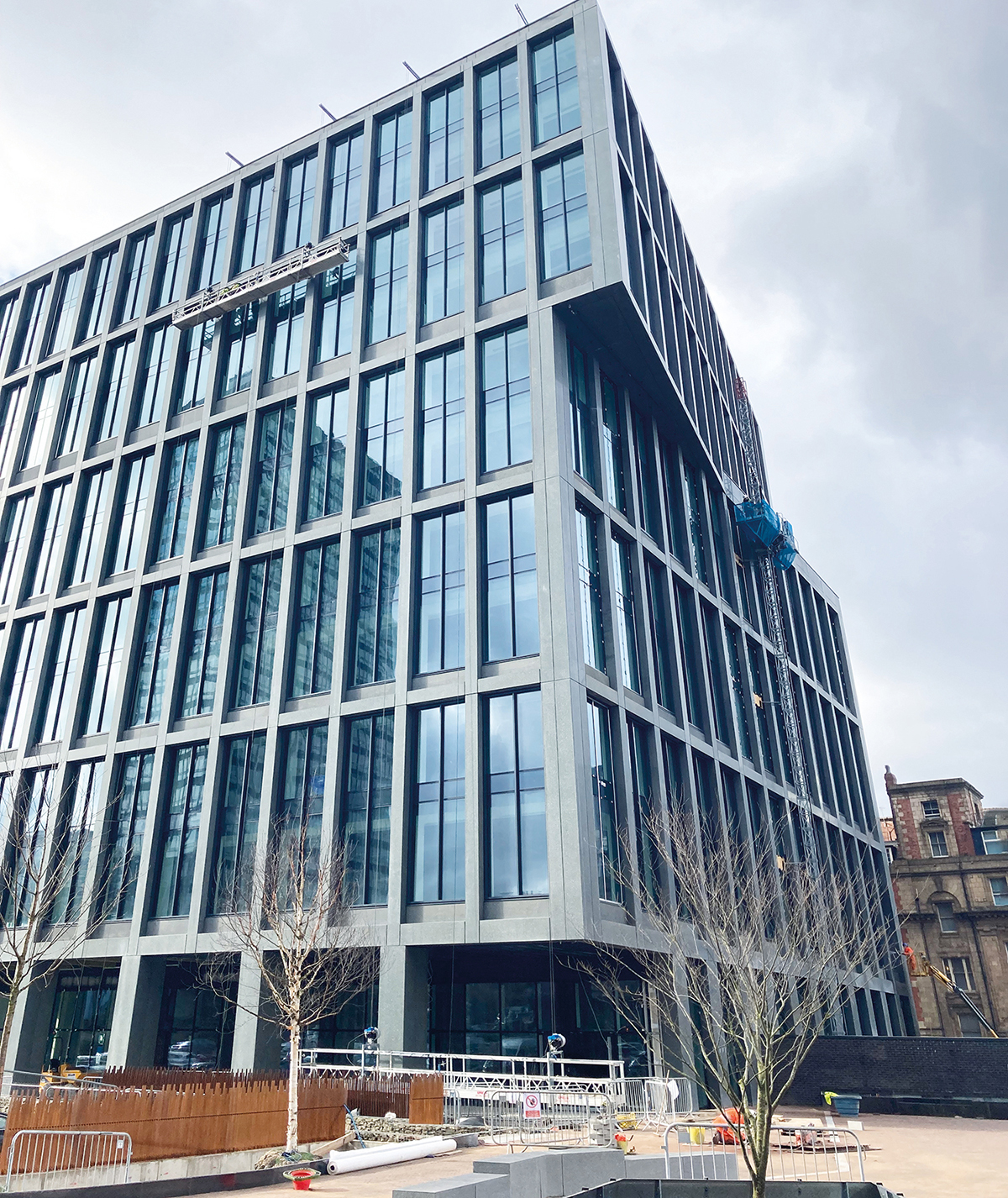
Twisting net zero offices
This outstanding steel-framed commercial scheme is the latest addition to a thriving Manchester business district.
Commendation: 4 Angel Square, NOMA, Manchester
Architect SimpsonHaugh
Structural engineer Buro Happold
Steelwork contractor Billington Structures Ltd
Main contractor Bowmer + Kirkland
Client MEPC
Located in the NOMA district in Manchester city centre, 4 Angel Square is an 11-storey 18,580 sq m contemporary office building.
The steel-framed structure is set around a centrally positioned concrete core that helps maximise the extent of clear-span floor space, while allowing greater penetration of sunlight.
The frame is based around a regular 8m perimeter column spacing, with internal spans of up to 18m long. Most of the beams are fabricated plate girders with bespoke web openings for the building’s services.
Adding some architectural drama and creating a standout landmark, the building is split
into two blocks, with the upper four levels shifting around a central pivot point.
The upper block responds to city views towards Victoria Station and the structure’s ‘twist’ forms a couple of 3.5m-wide corner cantilevers at the seventh floor.
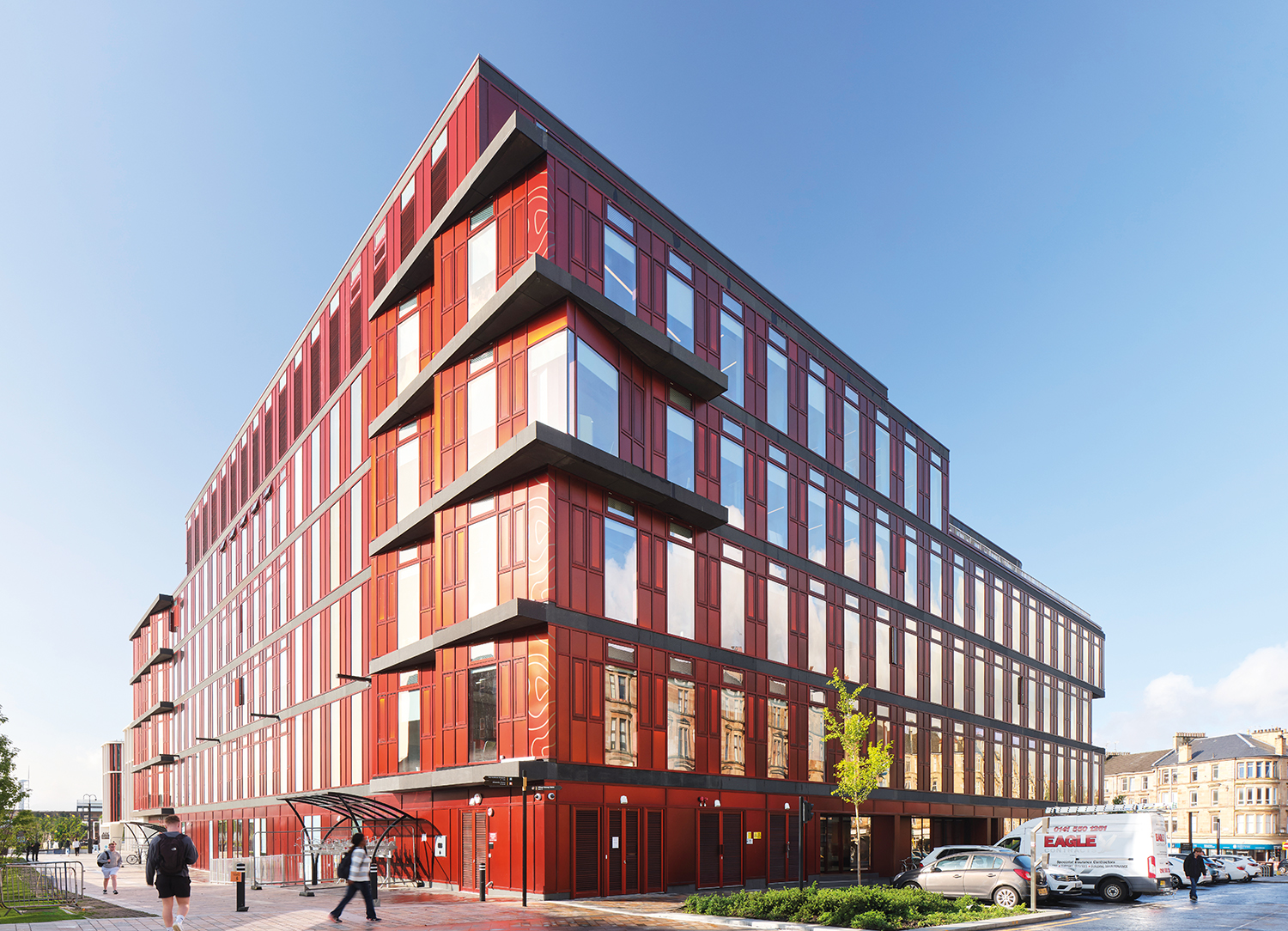
Learning with steel
Different research groups come together under one roof, with a design that encourages collaborative engagement.
Commendation: Clarice Pears Building, Institute of Health and Wellbeing, Glasgow
Architect AtkinsRéalis
Structural engineer AtkinsRéalis
Main contractor Multiplex
Client University of Glasgow
The Clarice Pears Building at the Institute of Health and Wellbeing in Glasgow is a braced steel-framed structure incorporating a number of sustainable features, such as roof-mounted PV panels.
Steelwork was chosen because the design brief required a lightweight building with minimal internal columns.
The round floor of the building has been designed as a marketplace, where social, learning and gathering spaces create informal work zones interlaced with teaching hubs.
Above this area, spread over the uppermost floors, are numerous teaching areas. At the centre of the building, a four-storey internal atrium is surrounded by complex projecting cantilevering balconies, which have been efficiently formed through the use of structural steelwork.

Capital design
Two office blocks form an integral element of a new multi-use destination in central Edinburgh.
Commendation: Haymarket, Edinburgh
Architect Foster + Partners
Structural engineer Arup
Steelwork contractor BHC Ltd
Main contractor Sir Robert McAlpine Ltd
Client Qmile Group, M&G Real Estate
The 1.6ha Haymarket development includes three Grade A office buildings, a 190-room hotel and a 172-room aparthotel, alongside future provision for retail and leisure space.
Two of the office buildings, known as Buildings Four and Five, are separate steel-framed structures that are connected by a full-height 12m-wide glazed atrium.
Both have been designed to span over the railway tunnels that serve the adjacent railway station.
The southern portion of Building Four spans directly over the station’s northbound tunnel. Its central, 16m-wide office floorplate is formed with columns that are supported on piles founded either side of the tunnel.
Building Five, which sits above the adjacent southbound tunnel, is partially supported by a Vierendeel truss, positioned from level three to level seven, that spans the 30m distance over railway infrastructure.
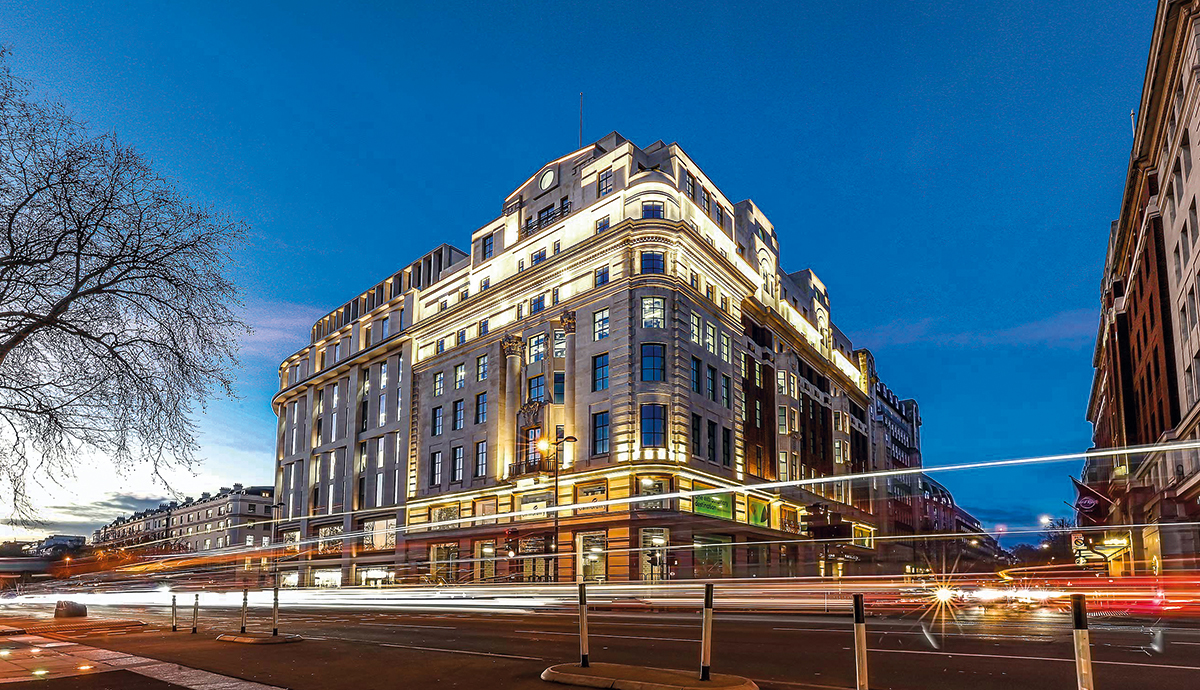
Retain and redevelop
A steel-framed office and retail development combines a retained facade with a new modern interior.
Commendation: One Great Cumberland Place, London
Architect Allford Hall Monaghan Morris
Structural engineer AKT II
Steelwork contractor Bourne Group Ltd
Main contractor Galliford Try
Client The Portman Estate
Located directly opposite the Marble Arch monument, a 10-storey development behind a retained facade has significantly upgraded a building originally built in the 1920s.
The project has created three floors of retail space and seven floors of high-quality Category A office space.
Once demolition was complete, a temporary retention system for the facade was installed and the existing basement enlarged into a two-level subterranean area.
New steelwork connects to the retained facade’s steel columns via bolted connections and provides the support for the old structure.
The majority of the new structure’s steel beams are fabricated plate girders with bespoke cells to accommodate the building’s services within their depth.
The exposed steel interior of the office plates presents a modern and industrial-looking environment.
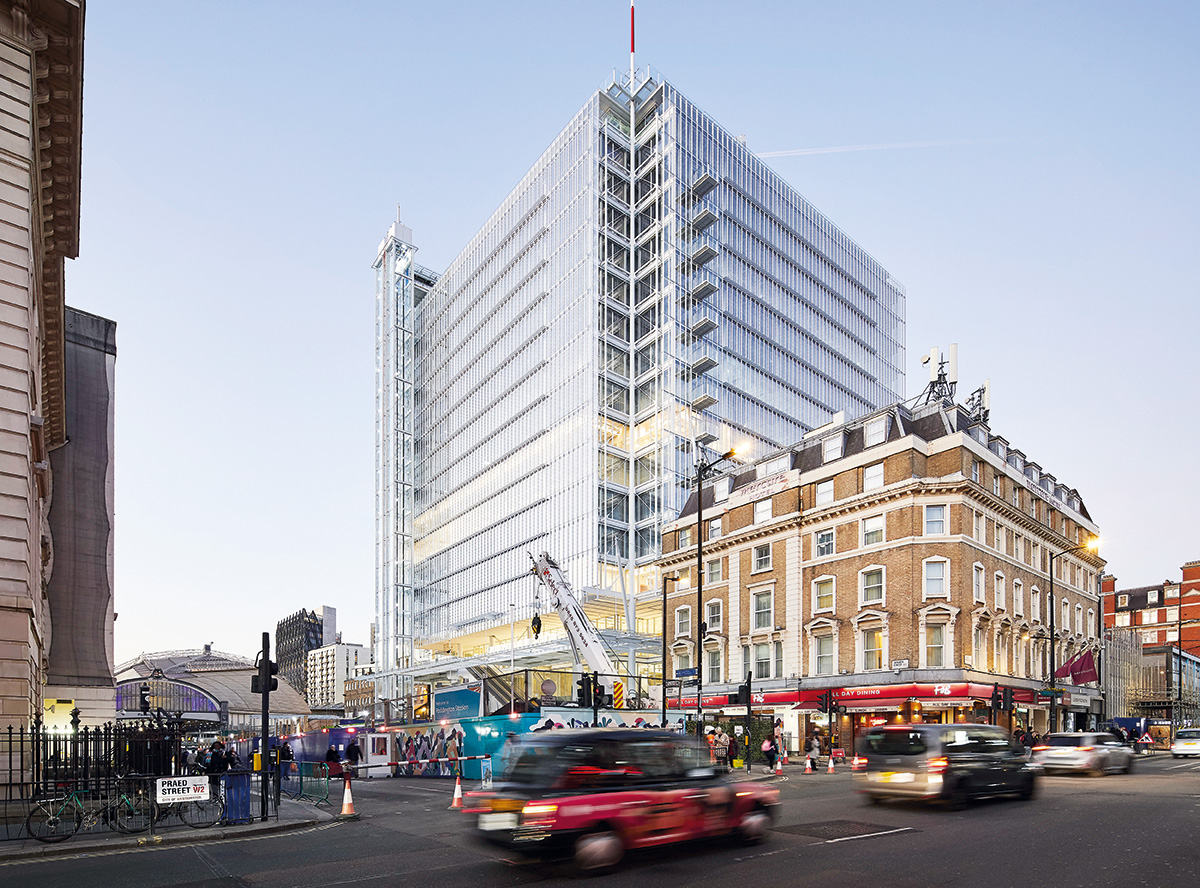
Aesthetics in the frame
Comprising 19 floors above ground, Paddington Square has been designed as a visually striking structure with a significant portion of its steel frame left exposed.
Commendation: Paddington Square, London
Architect Renzo Piano Building Workshop, Adamson Associates
Structural engineer WSP
Steelwork contractor William Hare Limited
Main contractor Mace
Client Great Western Developments Ltd
Steelwork was chosen for the Paddington Square commercial project to fulfil the design aesthetic of a transparent frame.
This not only includes exposed beams and columns within the building’s interior, but also an expressed exoskeleton that can be viewed through the structure’s glazed elevations.
As the steel and connections are on view in the building, a high-specification fireproofed paint with a quality finish was specified.
As well as the aesthetic qualities of steelwork, the material was chosen to provide the best framing solution to achieve the required spans and long column-free areas within the development.
This is most noticeable on the ground floor, which includes a large column-free reception space, terrace and workspace.
All of the perimeter columns are circular hollow sections, which were chosen for their aesthetic visual qualities.
Produced by BCSA and Steel for Life in association with Construction Management








